What's New
Displaying results 2051 - 2060 of 4052
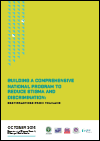
Resource | Publications,
Thailand has developed a national framework to measure HIV related S&D to monitor in several populations. To reduce costs in monitoring progress, S&D related questions were added to the existing national surveys of the general population and the integrated HIV biological and behavioral surveillance surveys (IBBS) of key populations, including people who inject drugs (PWID), men who have sex with men (MSM), transgender women (TGW), female sex workers (FSW), male sex workers (MSW) and migrant workers.

Resource | Publications,
Since 2012, Thailand has prioritized Stigma and Discrimination (S&D) reduction as one of the primary goals in its National AIDS Strategy. In addition, Thailand has reinforced its commitment to reduce S&D under the National Operational Plan for Ending AIDS 2015-2019 and the current national strategy to End AIDS 2017-2030.
To complement Thailand’s strategies to end AIDS, a comprehensive and sustainable framework to measure S&D has been developed to provide evidence to generate commitment and interventions to reduce S&D in Thailand. Measuring S&D in key populations (KP), People living with HIV (PLHIV) and health care providers serving those populations, presents a meaningful picture for developing effective interventions and monitoring national progress in S&D reduction in health care settings.
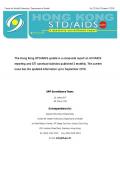
Resource | Publications,
The Hong Kong STD/AIDS update is a composite report on HIV/AIDS reporting and STI caseload statistics published 3 monthly. The current issue has the updated information up to September 2016.
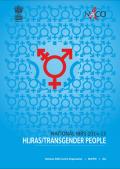
Resource | Publications,
The National IBBS was implemented among six population groups comprising Female Sex Workers (FSW), Men who have Sex with Men (MSM), Injecting Drug Users (IDU), Hijra/Transgender people (H/TG), Migrants and Currently Married Women (CMW) in high outmigration districts. The implementation was carried out with technical support from eight leading government public health institutes of the country. This report presents the findings of the National IBBS among Hijra/Transgender(H/TG).
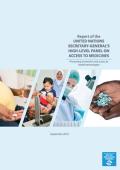
Resource | Publications,
The United Nations Secretary-General establish a high-level body to propose ways of incentivizing health technology innovation and increasing access to medicines and treatment, Secretary-General Ban Ki-moon, in November 2015, announced the appointment of a High-Level Panel on Innovation and Access to Health Technologies.
According to a High-Level Panel convened to advise the UN Secretary-General on improving access to medicines, the world must take bold new approaches to both health technology innovation and ensuring access so that all people can benefit from the medical advances that have dramatically improved the lives of millions around the world in the last century.
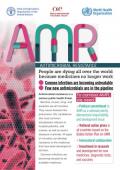
Resource | Laws and Policies,
Antimicrobial resistance (AMR) has become one of the biggest threats to global health and endangers other major priorities, such as human development. All around the world, many common infections are becoming resistant to the antimicrobial medicines used to treat them, resulting in longer illnesses and more deaths. At the same time, not enough new antimicrobial drugs, especially antibiotics, are being developed to replace older and increasingly ineffective ones.
Global leaders will meet at the United Nations General Assembly in New York in September 2016 to commit to fighting antimicrobial resistance together. This is only the fourth time in the history of the UN that a health topic is discussed at the General Assembly (HIV, noncommunicable diseases, and Ebola were the others). Heads of State and Heads of Delegations are expected to address the seriousness and scope of the situation and to agree on sustainable, multisectoral approaches to addressing antimicrobial resistance.
General Assembly of the United Nations: High-level Meeting programme
Fact sheet on AMR
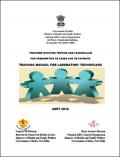
Resource | Publications,
While tuberculosis (TB) is the commonest opportunistic infection (OI) in HIV-infected individuals, HIV infection is an important risk factor for acquiring TB infection and its progression to active TB. HIV/TB together is a fatal combination with extremely high death rates (15 to 18%) reported among HIV-infected TB cases notified under Revised National TB Control Programme (RNTCP). Overall, TB is estimated to cause about 25% of all deaths among PLHIV in India.
This report has been developed to guide the Lab technicians regarding procedures of HIV testing services and provider initiated testing and counselling (PITC) among presumptive TB and diagnosed TB cases. The valuable inputs provided by experts from RNTCP and NACP in developing this document are appreciated.
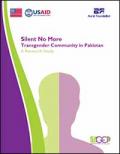
Resource | Publications,
The study investigated the vulnerabilities, challenges, and their consequences faced by the transgender communities. The research study has led to highlighting specific advocacy initiatives, which will help in awarding equal citizenship and dignity to the transgender community.
The transgender as a gender identity itself is defined in two manners. One approach is to regard transgender as an adjective, as a quality that further qualifies a noun like man, woman, person or individual. In this approach a transgender person is one whose gender identity is different from the physical sex/gender at birth. The other approach considers transgender an umbrella term that encompasses all genderqueer and gender-variant identities. However it is evident that in no way should transgender be confused with being “third-gender”; both are distinct and greatly differ from each other.
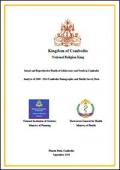
Resource | Publications,
Cambodia has the youngest population in Southeast Asia, with 22 % aged 15 and 24 years. Young people face many sexual and reproductive health concerns such as sexually transmitted infections, unwanted pregnancies, unsafe abortion, STIs, HIV and AIDS. These health concerns are exacerbated by the lack of sexual and reproductive health information, knowledge, youth friendly services, poor education attainment (i.e. low school enrolment, high dropout rates, and high repetition rates), and rural to urban migration for employment often placing young people at a social and economic disadvantage, especially those living in rural areas. Limited information is available about the sexual and reproductive health of adolescents and youth in Cambodia, and information that is available generally relates to sub-populations.
The aim of this report was to describe the current state of the sexual and reproductive health of adolescents and youth in Cambodia and this was achieved through the analysis of data on young women aged 15-24 years from the four Cambodian Demographic and Health Surveys (CDHS) conducted in 2000, 2005, 2010 and 2014.

Resource | Publications,
This is the 32nd edition of the "Indicators for Monitoring and Evaluation of The Strategy Health for All" since the first Common Framework for evaluation (CFE) was carried out in 1985. The global indicators have remained unchanged ever since. These indicators represented the essential minimum for member countries of WHO to evaluate their own national strategy towards HFA goals.
Following each alternating cycle of monitoring and evaluation by the member countries and by the
six regional coordinating centres, the Executive Board of the WHO and the World Health Assembly
was able to evaluate the HFA strategy globally. With each global monitoring and evaluation, the list of indicators was modified to ensure that it was adequate. In the course of the global reviews, the list of indicators was supplemented by sub-indicators and additional indicators to facilitate country monitoring and evaluation.





